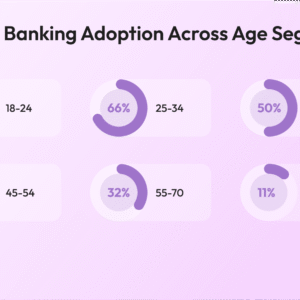
Microsoft has launched the cloud service, Azure, for businesses that need an advanced computing solution. A wide range of services is offered under the program. You can subscribe to Azure in different ways to get access to unique cloud services. But before you subscribe to Microsoft Azure, you need to know what it is and how it works. You can also look out for its top competitors and what they have to offer. After all, AWS Lambda vs Azure functions vs Google cloud is one of the hot topics of debate nowadays. In this blog you will find detailed information on Azure Subscription, types and how to scale the Azure environment.

What Is an Azure Subscription?
Azure Subscription is the subscription that you pay for Microsoft Azure. It includes all the services that are available in Azure like Linux VM, Web Apps, SQL DB, and more. You can use the same subscription for your entire organization or you can create multiple subscriptions for different use cases.
Azure Subscription is also known as Azure Evaluation Licence (ALE). However, if you have an existing subscription with Microsoft Azure then it is not possible to upgrade to an enterprise edition of that subscription.
If you have an active license of Windows Server 2016 Standard or Datacenter Edition on-premise then you can use your existing license for Azure too.
This means that you will be able to run any new version of Microsoft Azure without having to buy a new license again.
What Are the Types of Azure Subscriptions?
There are two types of Azure subscriptions:
Azure Basic (free) – A free subscription to Azure that provides you with basic features, such as Office 365, cloud storage, and email. You can use the free tier for up to three months.
Azure Premium ($20/month) – A subscription that gives you access to more advanced features, including virtual machines and databases, as well as Azure File Storage and Microsoft SQL Server instances. You can use the premium tier for up to one year.
What is Azure Subscription Hierarchy?
The Azure subscription hierarchy is the organization of Azure resources. It’s a logical grouping of Azure resources such as services and subscriptions, and it allows resources to be configured into different configurations based on their needs.
The hierarchy is based on the following:
Subscription: It determines your Azure environment. You can subscribe to multiple services at the same time.
Virtual machine: A virtual machine is the core of your Azure environment. You can create many virtual machines in a single subscription, and each one will have its independent IP address (and so on).
Resource group: It is one type of container where various resources like virtual machines are stored. You can also create multiple resource groups within a single subscription.
Pool: A pool is an abstraction that groups together some or all of your virtual machines in an organized manner so they are easier to manage and scale independently across available resources in a service provider’s data centers around the world without having to worry about availability zones or geographic location boundaries.”
What Are the Factors to Consider for Azure Subscription?
Here are the factors that you need to consider before selecting a subscription:
The price – The cost of your Azure subscription will vary depending on how many cores, memory, and storage you need. If you are planning on running multiple applications in the cloud, then you will need more hardware resources than if you just need a single application.
The flexibility – The length of time that your subscription will be active is another important consideration. If you want to change providers or regions at any point during the term of the agreement, then this is something that needs to be taken into account when choosing an Azure subscription.
The benefits – Some subscriptions offer access to additional features such as managed services or cross-platform support. These features can be beneficial if they are available but not essential so make sure that they are included in the list of benefits before deciding on which subscription best suits your needs.
The resource availability – How much computing power do you need? What is the maximum throughput of your application? Do you want to access your data remotely or always from a definite location? Do you want a connection that is always on?
How Can You Use Azure Subscriptions to Scale the Environment?
Azure subscriptions are the foundation for your Azure infrastructure. A subscription is a group of Azure resources that you can deploy and manage together, such as virtual machines, websites, and services.
Subscriptions let you scale up or down your environment as needed. You can use multiple subscriptions to create a high-availability architecture that supports multiple applications running on various server roles.
Azure provides several options to support different configurations of your subscription. For example, different Azure regions provide access to different data centers in those regions. This means you can choose which region or zones to use based on location, cost, and other factors.
You can also add more than one subscription to an existing subscription by using a feature called multi-cloud configuration (MCC) or multi-service deployment (MSD). MSDC lets you assign multiple services from different vendors to the same subscription. The MSD feature lets you deploy more than one application from different vendors into the same virtual machine instance across multiple clouds (Azure regions).
I hope that this article has helped you understand what an Azure subscription is. Thanks for reading!
Author Profile
- I am the owner of the blog readree.com. My love for technology began at a young age, and I have been exploring every nook and cranny of it for the past eight years. In that time, I have learned an immense amount about the internet world, technology, Smartphones, Computers, Funny Tricks, and how to use the internet to solve common problems faced by people in their day-to-day lives. Through this blog, I aim to share all that I have learned with my readers so that they can benefit from it too. Connect with me : Sabinbaniya2002@gmail.com
Latest entries
 ArticleOctober 23, 2025How to Use Rotating Residential Proxies
ArticleOctober 23, 2025How to Use Rotating Residential Proxies ArticleOctober 19, 2025Why You Should Use Geo-Targeted Proxies for Web Scraping
ArticleOctober 19, 2025Why You Should Use Geo-Targeted Proxies for Web Scraping SoftwareOctober 15, 2025The Importance of Cyber Security in a Digitally Connected World
SoftwareOctober 15, 2025The Importance of Cyber Security in a Digitally Connected World BlogOctober 8, 2025The Most Recent Trends in Generative AI in the Banking Industry
BlogOctober 8, 2025The Most Recent Trends in Generative AI in the Banking Industry